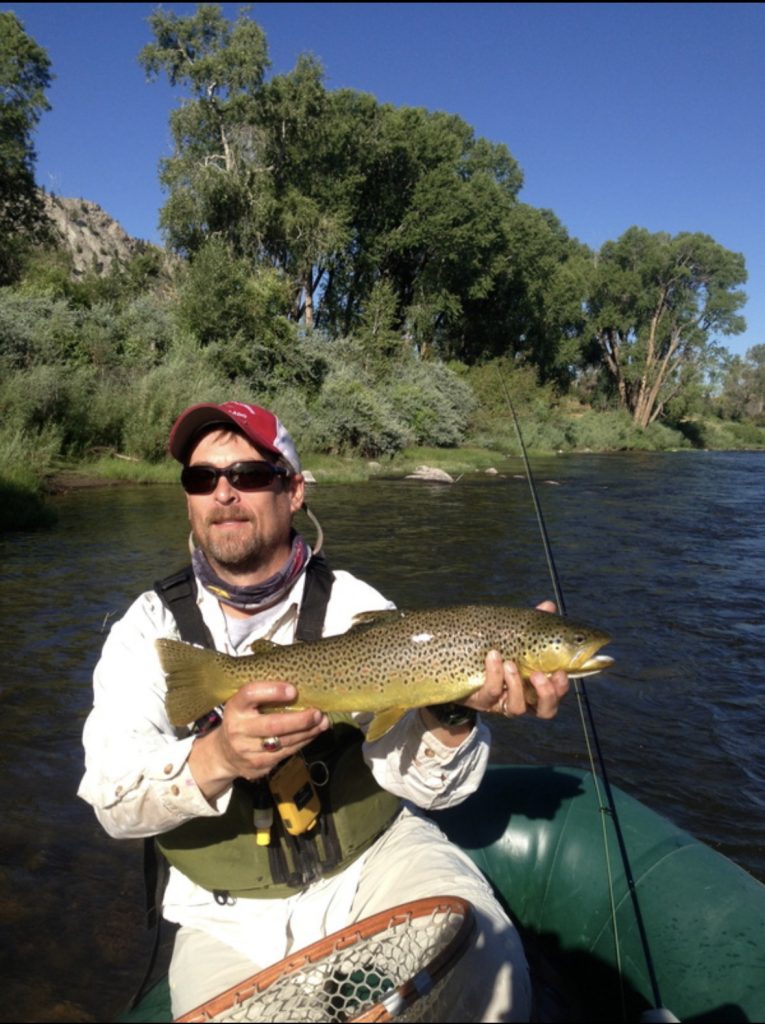Salomone: Trophy trout?

Michael Salomone/Courtesy photo
A trophy trout is a personal ideal. But, as often as we are inclined to do, people have to attach tangible, measurable indicators to justify classifying a trout as a trophy. When I moved to Vail in the early ’90s, old timers would speak of 30 inches as the marker of a trophy rainbow trout. A 30-inch fish boggled my mind. My inseam is 30 inches.
As much as I don’t want to acknowledge the fact, I still seem to adhere to the 30-inch mark by default, knowing full well a 30-inch trout is very hard to come by. Thirty inches loomed ominously over my angling for years as the target of my fly-fishing adventures. Luckily, my fly fishing has delivered six rainbows over the magical mark and one that stretched the ruler to 32 inches. These are not steelhead but rainbow trout — and all from Colorado.
Does a trophy change with the type of fish or water or style of fishing used? The answer is yes.

Colorado Parks and Wildlife (CPW) sets minimums for trophy size. CPW’s Master Angler Recognition Program has length measurement minimums for each species of fish. Brook trout have a 16-inch minimum to qualify for recognition. Brown trout must be 22 inches and rainbow trout 24 inches. These are not state record size trout but a delineation any angler can accomplish. State record size fish are freak abnormalities. Master Angler status fish are attainable goals but still possess impressive scale.
These fish are from larger rivers like the Eagle River or, more regularly, the Colorado River. The upper Colorado River hides some giants that often show up in river samples. The size of the river and amount of necessary forage to maintain a large trout are favorable components of the mighty river that allow trout to attain some staggering proportions. I have seen photos of massive brown trout that were collected through electroshock sampling conducted by CPW.

Support Local Journalism
What about small water? Small water can hold fish of unexpected proportions. Compared to the size of the stream and holding structure, dominant trout can exceed anticipated size, but the shortness of the growing season and the possibility for winter mortality lowers the chances.
The majority of these fish are caught with a 5-weight fly rod. Lighter rods shorten the trophy mark. For instance a 7-foot-6-inch 4-weight trophy mark might be 24 inches while a 3-weight might drop down to 18-20 inches.
Homestake Creek is a prime example of smaller water that holds surprisingly hefty trout — if you know where to look. Presenting a fly that is too good of a meal creates a scenario where the largest trout in the run strikes the offering usually on the first cast. Cover more water and cast into prime spots with the expectation of a bite. This approach often leads to dark headed browns over 18 inches from a stream you can cross in a few steps.

However, with small water the trophy trout moniker rests on a personal scale. Two decades ago, a long walk into the valley above Yeoman yielded a football-shaped 17-inch brook trout. Would that same brook trout rate highly on the trophy scale in Canada? Not likely. But for the watershed from which it came, yes.
Tailwaters possess year round feeding conditions and prevalent food. The consistency of a high protein food source such as the mysis shrimp found in the Fryingpan River elevates the chances for encountering a true giant trout. The fish that inhabit the upper Fryingpan River exhibit true giant proportions. Couple abundant food with catch-and-release regulations and you can see why the Fryingpan River is a location to remember.
Placing yourself in proximity to big fish is key. Covering water helps too. The Colorado River, Fryingpan River or local private water all hold potential for anglers to obtain a trophy trout.
When it really comes down to it, a trophy trout is a personal thing. A 15-inch rainbow that ate the dry fly you tied is a trophy of sorts. Whether Master Angler, personal best or state record freak, trophy trout are what dreams are made of.

Michael Salomone has lived in the Eagle River valley since 1992. He started his professional guiding career in 2002 and currently guides for Vail Valley Anglers. He lives on the bank of the Eagle River with his wife, Lori, youngest daughter, Ella and a yellow Labrador named Poppy. His published writing has appeared in Southwest Fly Fishing, Fly Rod & Reel, Eastern Fly Fishing, On the Fly, FlyLords, the Pointing Dog Journal, Upland Almanac, TROUT, American Fly Fishing, USA Today Hunt & Fish and Fly Fisherman magazines.









